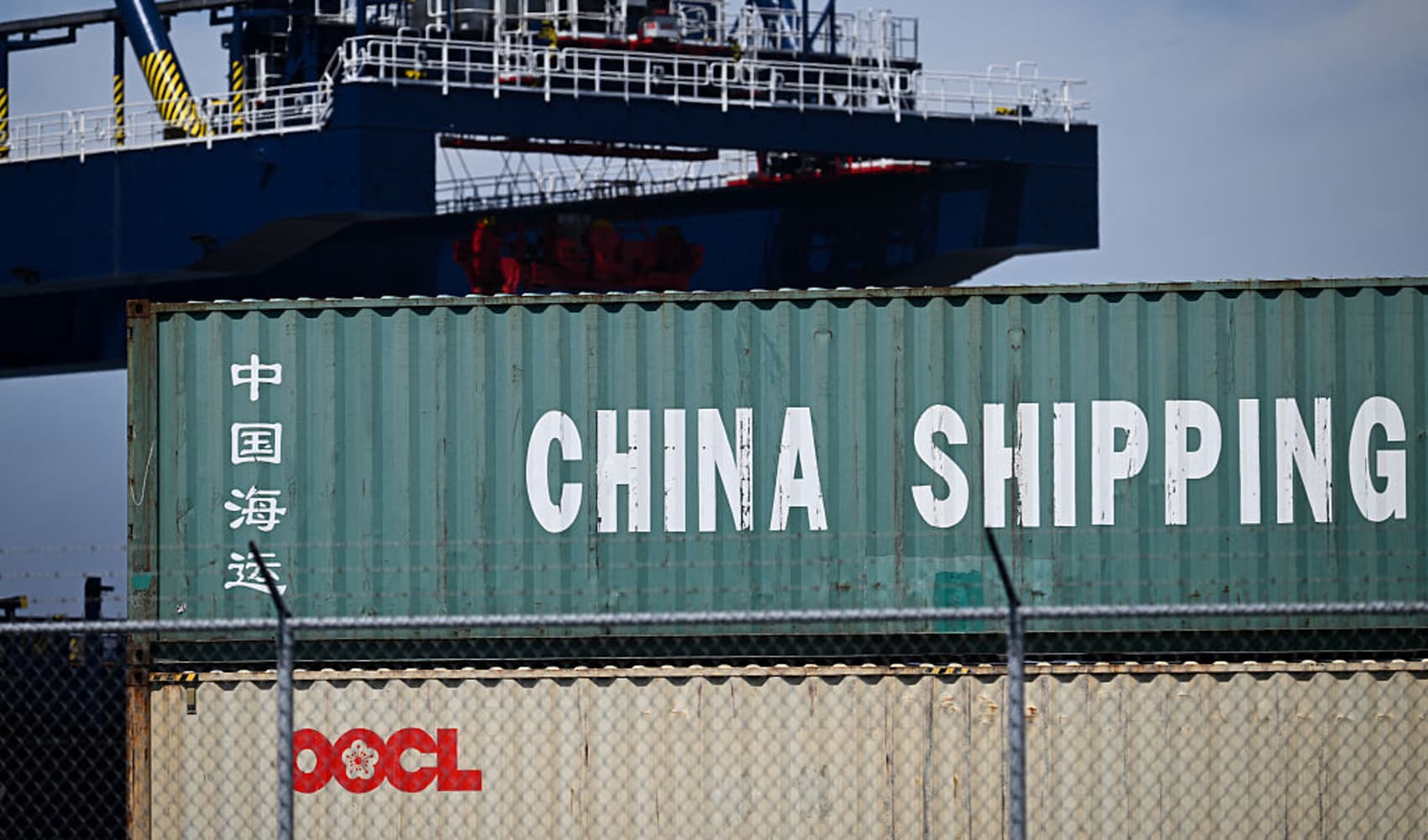Trump Policies: Are Countries Pivoting Away from the US?
CNBC Daily Open: Is the World Really Turning Away from the U.S. Under Trump Policies?
Introduction: A Shifting Global Landscape?
Good morning, world! It seems the global chessboard is being rearranged, and some pieces are moving away from the United States. Are President Trump's policies inadvertently pushing other nations to seek partnerships and strategies that bypass the U.S. altogether? CNBC's Daily Open is buzzing with this question. Let’s dive into the data, the deals, and the developing trends to see if this shift is a real sea change or just a temporary eddy in the global economy.
Market Snapshot: Mixed Signals
While U.S. stocks ended last week on a positive note, Sunday night futures suggest a slight pullback. Is this just a blip, or a sign of investor unease given the geopolitical climate?
- Stocks closed last week in the green, but U.S. futures edged downward Sunday night local time.
- This week is packed with earnings reports from the “Magnificent Seven” as well as inflation and jobs data. These reports will be crucial indicators of the underlying health of the U.S. economy.
China's Internal Focus: Building Resilience
China is bracing for impact. At a recent Politburo meeting, the Chinese government emphasized the need to bolster domestic businesses. What does this mean for the rest of the world?
Strengthening Domestic Businesses
China is clearly prioritizing internal growth and resilience, likely in response to ongoing trade tensions with the U.S. This could lead to a decrease in reliance on foreign markets, including the U.S., in the long run. Think of it like a plant growing stronger roots to weather a storm.
Factory Slowdowns and Worker Displacement
The impact of U.S. tariffs is already being felt. Reports indicate that factories in China are pausing production and sending workers home. This is a tangible consequence of the trade war, affecting livelihoods and potentially destabilizing local economies. How can China mitigate these effects?
Southeast Asia's Regional Embrace: Finding Strength in Unity
Southeast Asian countries are finding strength in numbers. Facing the crosswinds of Trump's tariffs and the escalating U.S.-China trade war, they're turning to each other for trade and investment. Is this a strategic move to diversify their economies and reduce dependence on the U.S. and China?
ASEAN's Growing Clout
The Association of Southeast Asian Nations (ASEAN) is emerging as a powerful economic bloc. By deepening intra-regional trade and investment, these countries are creating a buffer against global economic shocks. This could be a game-changer for the region, giving them more autonomy and influence.
Diversifying Supply Chains
Companies are actively seeking alternative supply chains outside of China and the U.S., and Southeast Asia is a prime destination. This diversification could lead to increased investment and job creation in the region, further strengthening its economic independence.
Trump's "America First" Philosophy: A Double-Edged Sword?
President Trump's "America First" ideology prioritizes domestic interests. But is this approach isolating the U.S. on the global stage?
The Assumption of Dependence
The core tenet of "America First" seems to be that the world needs America more than America needs the world. While the U.S. holds a significant position in the global economy, is this assumption still valid in a rapidly changing world?
The Risk of Alienation
By prioritizing domestic interests above all else, the U.S. risks alienating its allies and partners. This could lead to a decline in U.S. influence and a weakening of its global leadership role. Is the short-term gain worth the long-term cost?
Deep-Sea Mining: A New Frontier or an Environmental Threat?
President Trump recently signed an executive order to jump-start deep-sea mining. What are the potential economic and environmental implications of this move?
The Promise of Resources
Deep-sea mining promises access to valuable minerals and resources that are crucial for various industries. This could boost the U.S. economy and reduce reliance on foreign suppliers. But at what cost?
Environmental Concerns
Deep-sea mining poses significant risks to fragile marine ecosystems. The potential for irreversible damage to biodiversity and disruption of ocean processes is a major concern. Is the pursuit of resources worth the environmental risk?
Earnings Season: Decoding the "Magnificent Seven"
This week is crucial for understanding the health of the U.S. economy, with earnings reports expected from the "Magnificent Seven" tech giants. Are they continuing their stellar performance, or are cracks starting to appear?
The Tech Titans' Influence
The performance of these seven companies – Apple, Microsoft, Alphabet (Google), Amazon, Nvidia, Meta (Facebook), and Tesla – has a significant impact on the overall market. Their earnings reports will provide valuable insights into consumer spending, technology trends, and the future of the U.S. economy.
Inflation and Jobs Data: Key Indicators
Alongside earnings reports, inflation and jobs data will be closely watched. These indicators will influence the Federal Reserve's monetary policy decisions and shape the outlook for the U.S. economy.
Analyzing the Data: Inflationary Pressures
Inflation remains a key concern for investors. Will this week's data confirm the downward trend, or will it signal renewed inflationary pressures?
The Fed's Dilemma
The Federal Reserve is walking a tightrope, trying to balance the need to control inflation with the risk of triggering a recession. This week's data will play a crucial role in shaping their next moves.
Impact on Consumer Spending
High inflation erodes consumer purchasing power, leading to reduced spending and slower economic growth. Monitoring inflation trends is essential for understanding the overall health of the economy.
Job Market Trends: Strength or Weakness?
The job market has been a bright spot in the U.S. economy. But are there signs of weakening?
Unemployment Rate and Wage Growth
Key indicators to watch include the unemployment rate and wage growth. A sustained period of strong job growth and rising wages would signal a healthy economy, while a slowdown could indicate a potential recession.
Labor Force Participation Rate
The labor force participation rate provides insights into the number of people actively seeking employment. A declining participation rate could suggest underlying economic weakness.
Global Trade Dynamics: A Shifting Landscape
The global trade landscape is constantly evolving, driven by geopolitical tensions, technological advancements, and changing consumer preferences. How are these factors shaping the future of international trade?
The Rise of Regional Trade Agreements
As countries seek to reduce their reliance on global superpowers, regional trade agreements are becoming increasingly important. These agreements foster closer economic ties between participating nations, creating new opportunities for trade and investment.
The Impact of Technology
Technology is transforming global trade, enabling faster, cheaper, and more efficient transactions. E-commerce, digital platforms, and blockchain technology are revolutionizing the way businesses operate across borders.
Geopolitical Risks: Navigating Uncertainty
Geopolitical risks, such as conflicts, political instability, and trade wars, can significantly impact the global economy. How can businesses and investors navigate these uncertain times?
Diversification and Risk Management
Diversifying investments and supply chains is crucial for mitigating geopolitical risks. By spreading exposure across different regions and industries, businesses can reduce their vulnerability to unforeseen events.
Staying Informed and Adaptive
Staying informed about geopolitical developments and adapting to changing circumstances is essential for navigating uncertainty. Businesses need to be agile and flexible in order to respond effectively to emerging challenges.
The Future of U.S. Economic Policy
What does the future hold for U.S. economic policy? Will the "America First" approach continue, or will there be a shift towards greater international cooperation?
Potential Scenarios
There are several potential scenarios for the future of U.S. economic policy, ranging from a continuation of the current approach to a more multilateral approach that emphasizes international partnerships and cooperation.
The Role of Global Collaboration
Addressing global challenges, such as climate change, pandemics, and economic inequality, requires international collaboration. The U.S. has a crucial role to play in fostering this collaboration and working towards a more sustainable and equitable future for all.
Conclusion: A World in Flux
So, is the world really turning away from the U.S.? The evidence suggests a growing trend towards diversification and regional cooperation, potentially driven by President Trump's policies. While the U.S. remains a global economic powerhouse, its dominance is being challenged, and other nations are actively seeking alternative pathways to growth and prosperity. The future will depend on how the U.S. adapts to this changing landscape and whether it embraces a more collaborative approach to global affairs. Only time will tell.
Frequently Asked Questions (FAQs)
Here are some frequently asked questions related to the article:
- What are the main drivers behind the shift away from U.S. economic dominance?
A combination of factors, including President Trump's "America First" policies, trade tensions, and the rise of other economic powers like China and ASEAN, are contributing to this shift. - How are Southeast Asian countries benefiting from the U.S.-China trade war?
Southeast Asian countries are attracting investment and diversifying their economies by offering alternative supply chains and trade partners. - What are the potential environmental consequences of deep-sea mining?
Deep-sea mining could cause irreversible damage to fragile marine ecosystems, disrupting biodiversity and potentially affecting ocean processes. - What should investors watch for in this week's earnings reports from the "Magnificent Seven?"
Investors should pay attention to revenue growth, profitability, and future outlook to gauge the overall health of the tech sector and the U.S. economy. - How can businesses mitigate the risks associated with geopolitical uncertainty?
Diversifying investments, building resilient supply chains, and staying informed about global developments are crucial for mitigating geopolitical risks.

